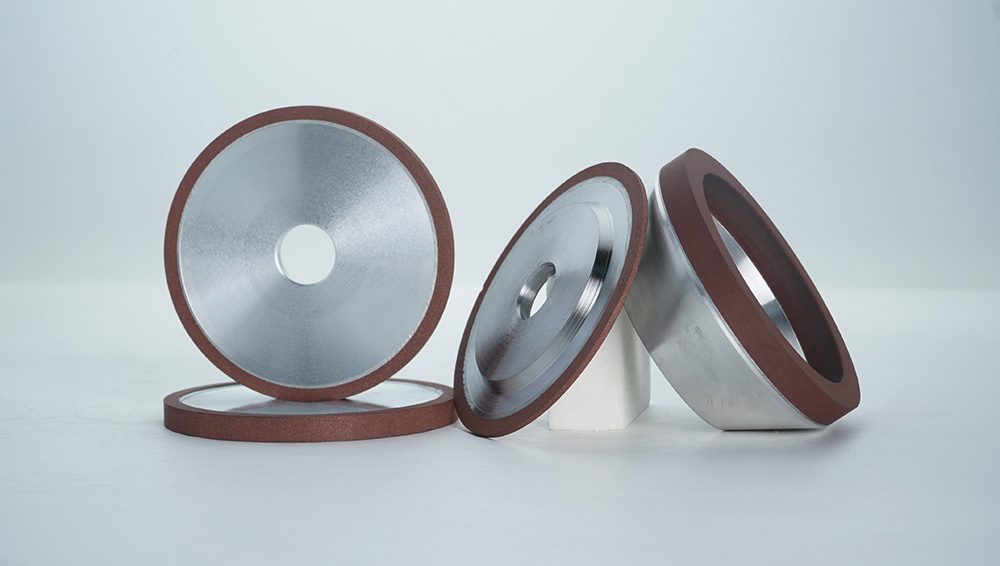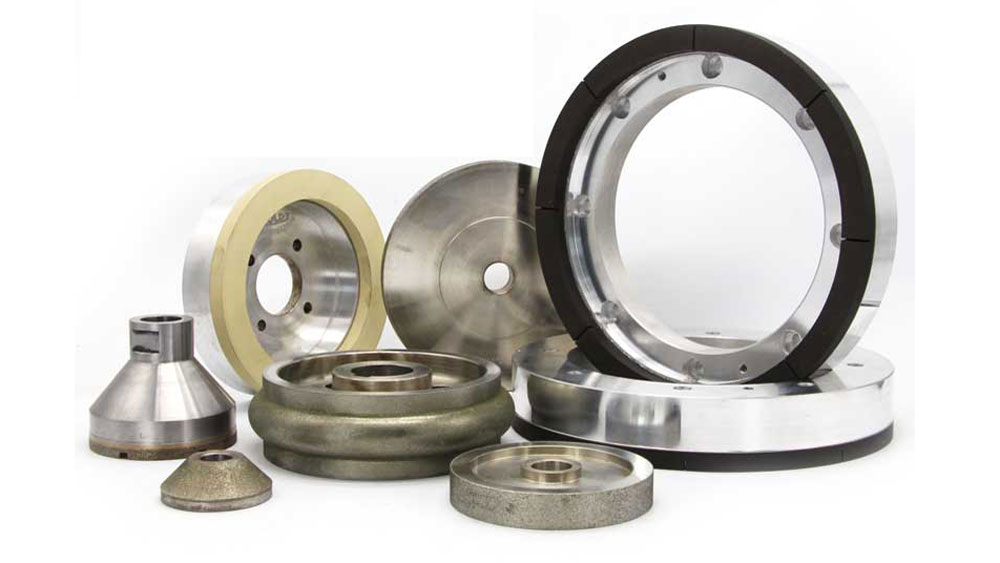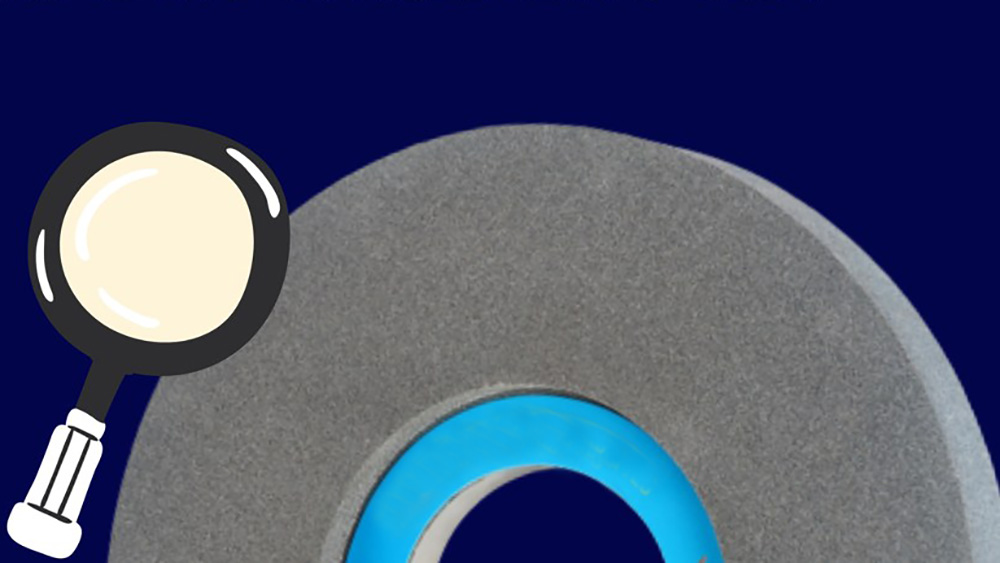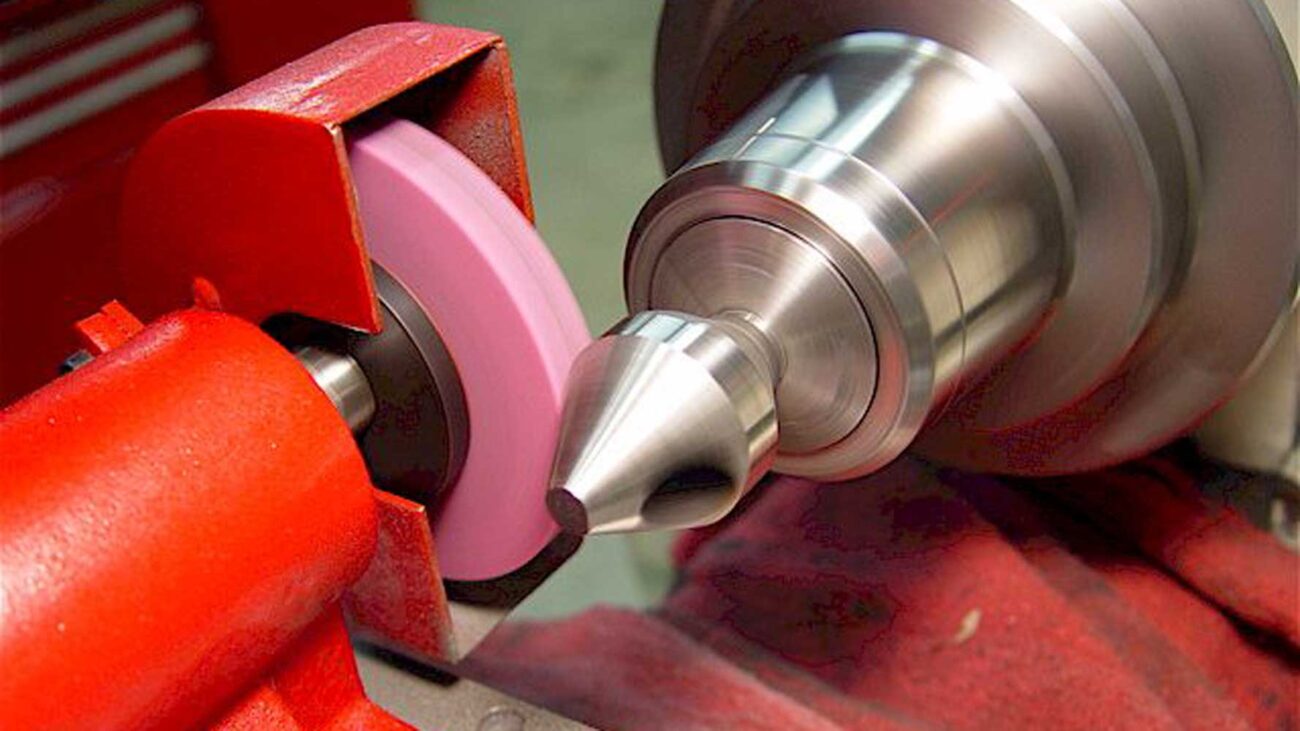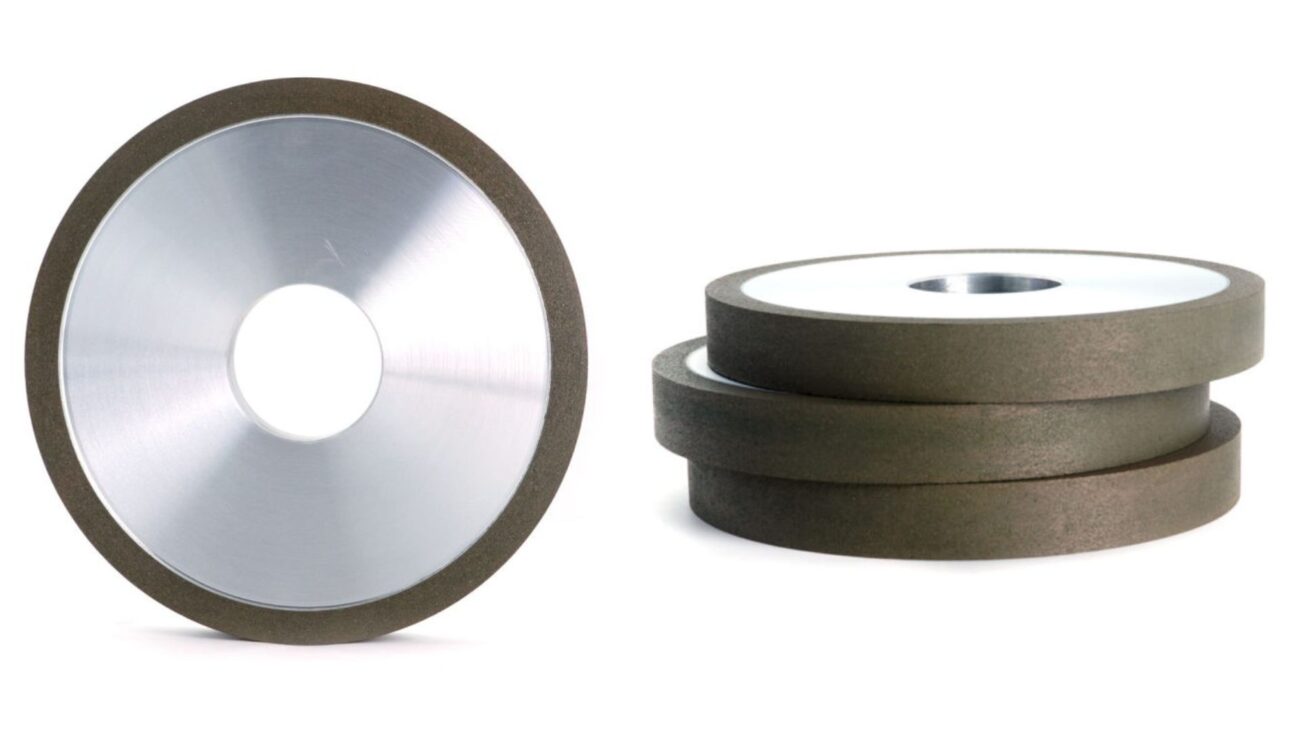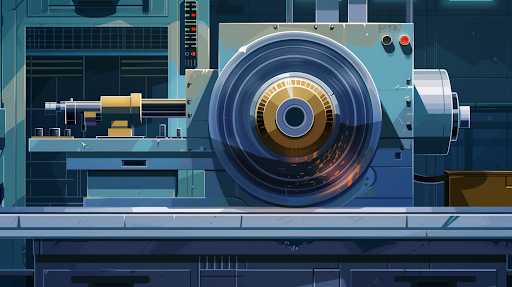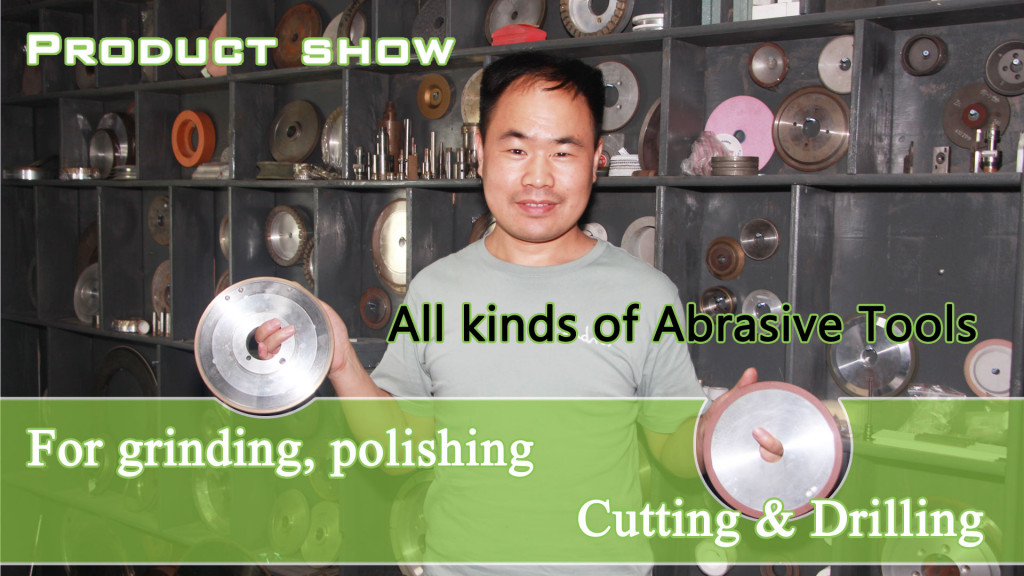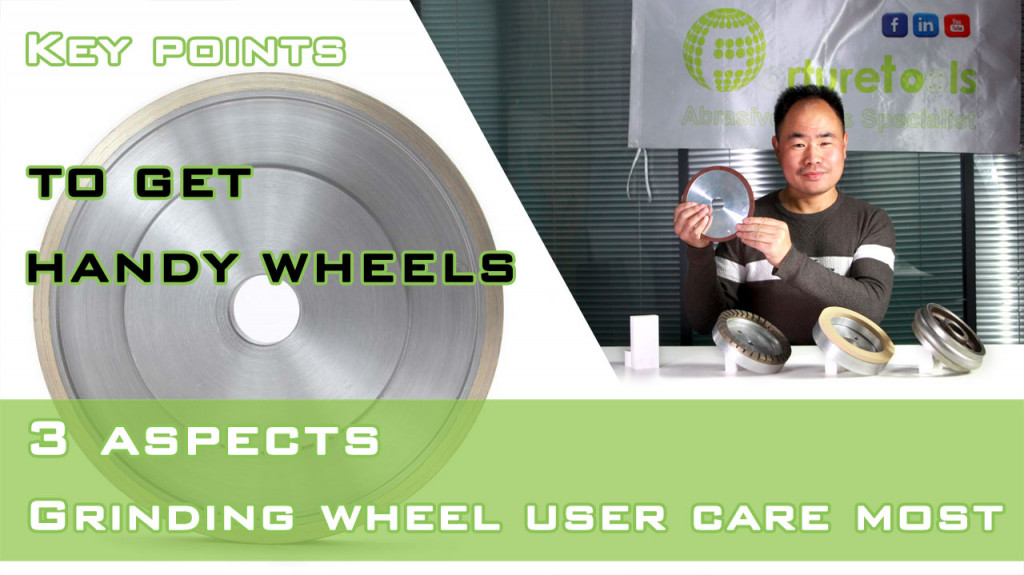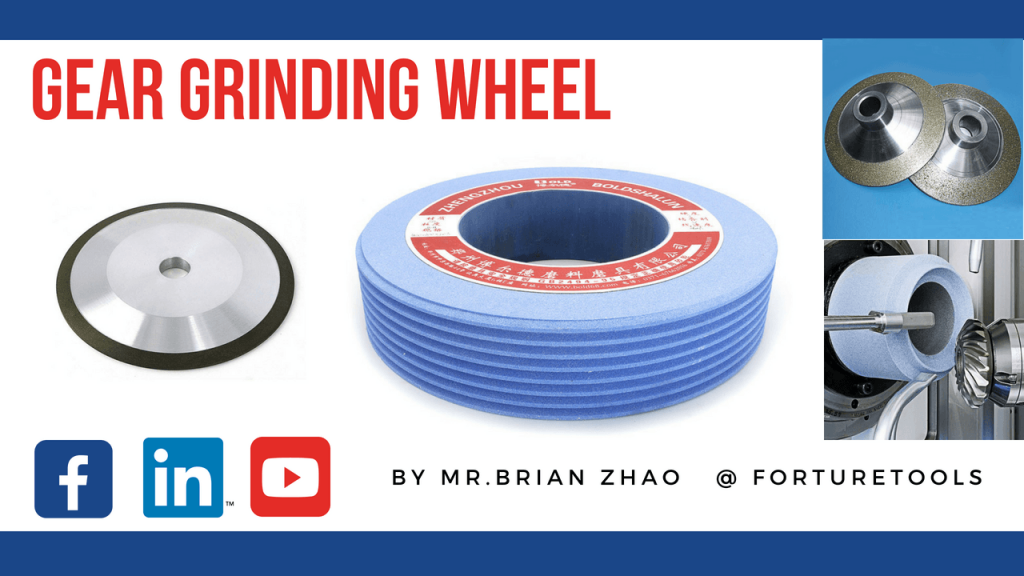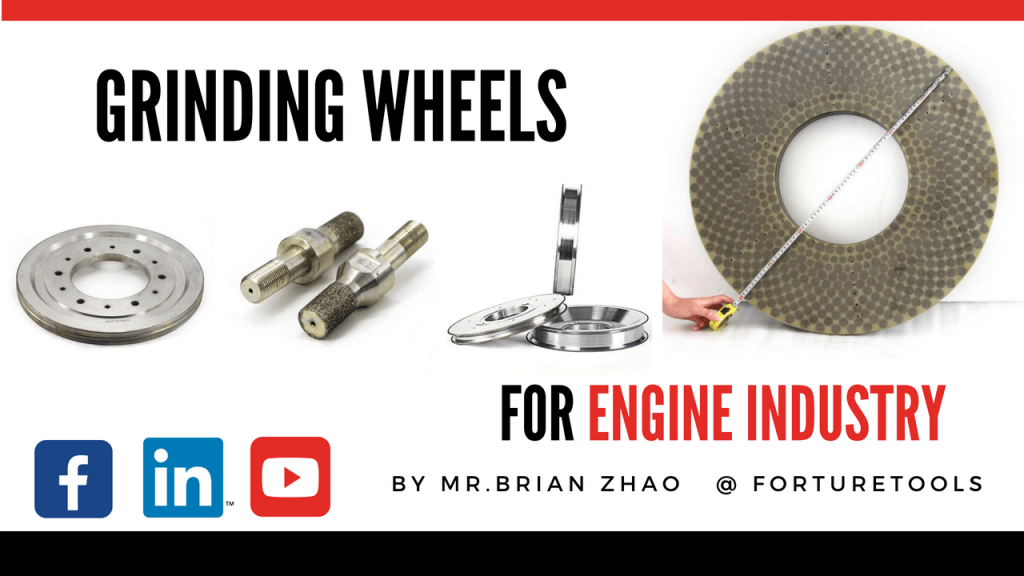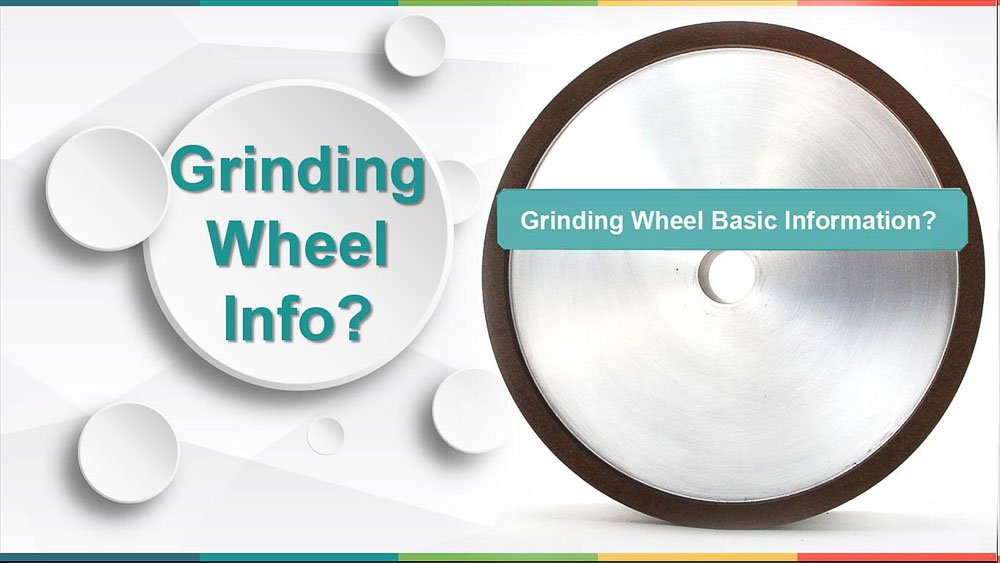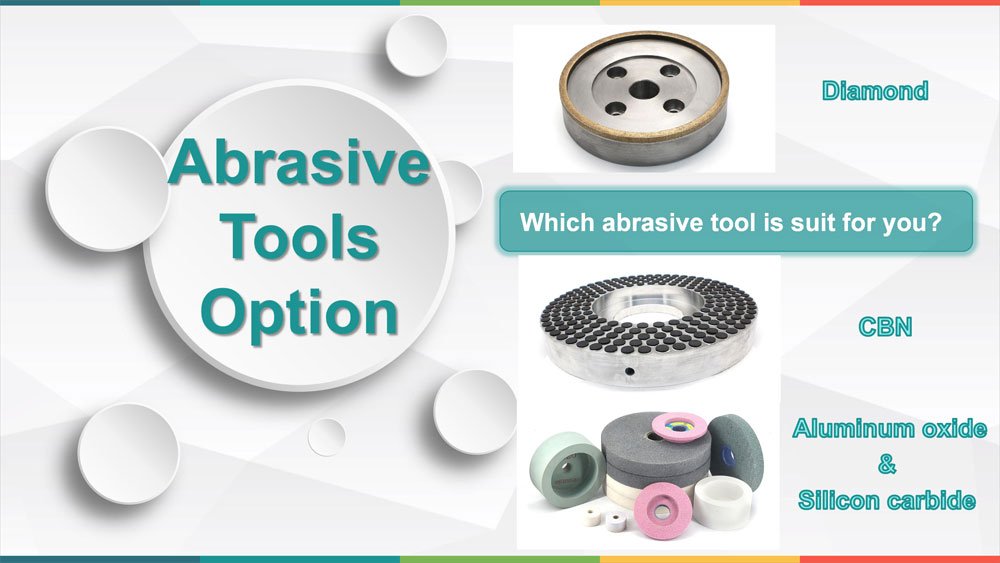The grinding and manufacturing industry has been booming for the last several months. Thus, using a grinding wheel is very essential in a lot of industries. It helps shape metals and sharpen tools. Yet, their effectiveness and longevity depend on proper maintenance and operation.
Like other power tools, these wheels also need care and attention. This is important to ensure safe and efficient performance. This blog post gives eight easy tips to make your grinding wheels last longer and stay safe. Whether you’re an expert or love DIY projects, these tips will greatly help you. Moreover, they’ll also allow you to maintain your grinding discs.
Abstract
Through this blog post, you will learn about the grinding wheel and its different types. After that, it explores the top 8 grinding disc maintenance tips. Next, you will come across the safety precautions of using a grinding disc. So, check out this blog post without further delay.
What is a Grinding Wheel?
Grinding wheels are round discs that have rough materials attached to them. Although the disc shape is useful to a great extent, it is also available in the form of cones or cups. An abrasive wheel is linked to grinders and revolves at high speeds to perform many functions. The abrasive grains in the wheel may grind or cut through hard materials like metal or steel. These abrasive grains stick together by organic or inorganic materials.
Abrasive Problem & Buy Grinding Wheel
Different Types of Grinding Wheels
A grinding wheel is an essential tool in the manufacturing process. Also, engineers use it to cut, grind, and provide finishing to various materials. Here are some different types of grinding wheels you should know about.
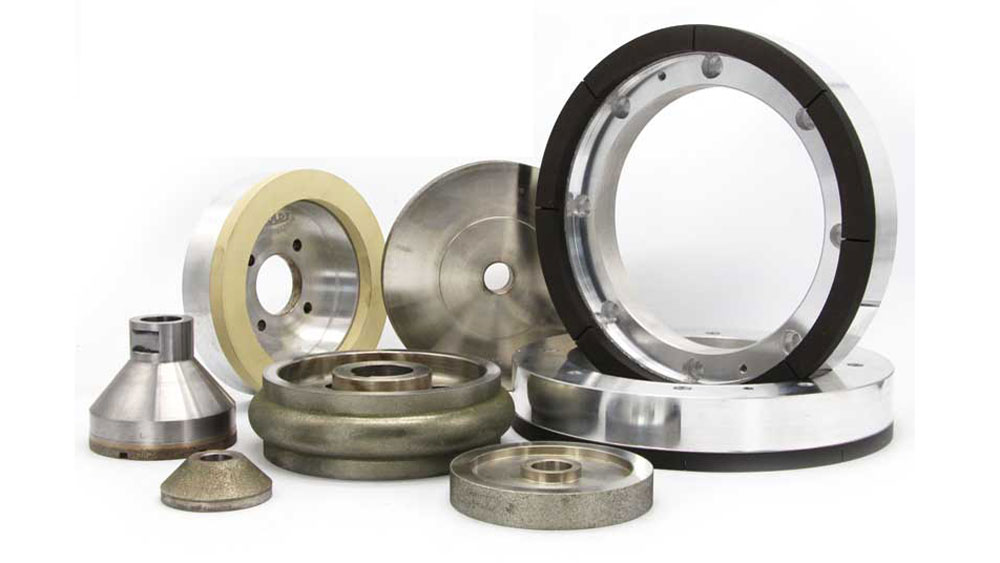
- Diamond Abrasive.
- Properties. Diamond Abrasive is known for extreme hardness, high thermal conductivity, and exceptional durability.
- Application. It is also perfect for precision grinding of hard and brittle materials like ceramics, glass, and gemstones.
- CBN (Cubic Boron Nitride) Abrasive.
- Properties. CBN offers high hardness, thermal stability, and stable chemical resistance.
- Application. It is used for grinding ferrous materials, such as high-speed tools, tool steel, and cast iron.
- Aluminum Oxide Abrasive.
- Properties. Aluminum Oxide Abrasive presents good toughness, durability, and moderate hardness.
- Application. It is suitable for grinding soft as well as hard metals, including steel and stainless steel.
- Silicon Carbide Abrasive.
- Properties. Silicon Carbide Abrasive features hardness, thermal resistance, and a brittle nature.
- Application. It is also for grinding non-ferrous metals, cast iron, and non-metallic materials, like stone and glass.
Each of these discs is helpful for specific uses and materials. As a result, it ensures efficient and precise results in various industrial processes.
Unique Bonding Types of Grinding Wheels
Grinding Wheels can be classified into various types based on their bonding materials. So, here are some common bonding types.
- Metal Bond.
- Characteristics. Metal bond is known for its high strength and durability. Thus, it is ideal for heavy-duty grinding applications.
- Suitable Abrasive. Diamond and CBN (Cubic Boron Nitride).
- Resin Bond.
- Characteristics. Resin Bond offers good elasticity, precision, and sharp cutting ability. Hence, it is suitable for various materials and applications.
- Suitable Abrasive. Diamond, CBN, Aluminum Oxide, and Silicon Carbide.
- Vitrified Bond.
- Characteristics. Vitrified Bond shows high heat resistance and stable performance. As a result, it is a favored tool for precision grinding operations.
- Suitable Abrasive. Diamond, CBN, Aluminum Oxide, and Silicon Carbide.
- Rubber Bond.
- Characteristics. Rubber Bond provides a smooth finish. Therefore, it is effective for fine-finishing and polishing applications.
- Suitable Abrasive. Aluminum Oxide and Silicon Carbide.
Each bonding type has specific benefits and is chosen based on the requirements of the grinding application. These applications include material hardness, surface finish requirements, and operating conditions.
Components of Grinding Wheels
Grinding wheels are important tools in the wheel’s processes for shaping and finishing materials. Thus, they consist of various components that contribute to their function and performance. So, here are some components of grinding wheels.
- Abrasive Grain Size. The size of the abrasive particles determines the wheel’s cutting ability and the finish quality of the workpiece.
- Borazon. Borazon is an abrasive material known for its hardness and is ideal for grinding hard firm materials.
- Silicon Carbide. This abrasive is harder than aluminum oxide and is useful for grinding soft metals, cast iron, and certain ceramics.
- Coolant Use. Applying coolant reduces heat and friction during grinding, extending the wheel’s life and preventing damage to the workpiece.
- Wheel Speed. The speed at which the grinding wheel rotates affects the efficiency of the grinding process and the quality of the finished product.
- Aluminum Oxide. A common abrasive material useful in grinding wheels, aluminum oxide is suitable for grinding high-elastic materials such as steel and other hard alloys.
- Diamond. The hardest known material, diamond is useful in grinding wheels for cutting and grinding hard materials like ceramics.
- Vitrified Bonds. These bonds are made from a combination of clays and other ceramic materials, providing strength and durability to the grinding wheel.
These components work together to ensure the grinding wheel operates and meets the demands of various grinding tasks. Now, move on to the next section to learn about the top 8 grinding wheel maintenance tips.
Top 8 Grinding Wheel Maintenance Tips
Proper maintenance of a grinding disc is important for best use and safety. Here are the top 8 grinding wheel maintenance tips to keep the wheel in excellent condition.
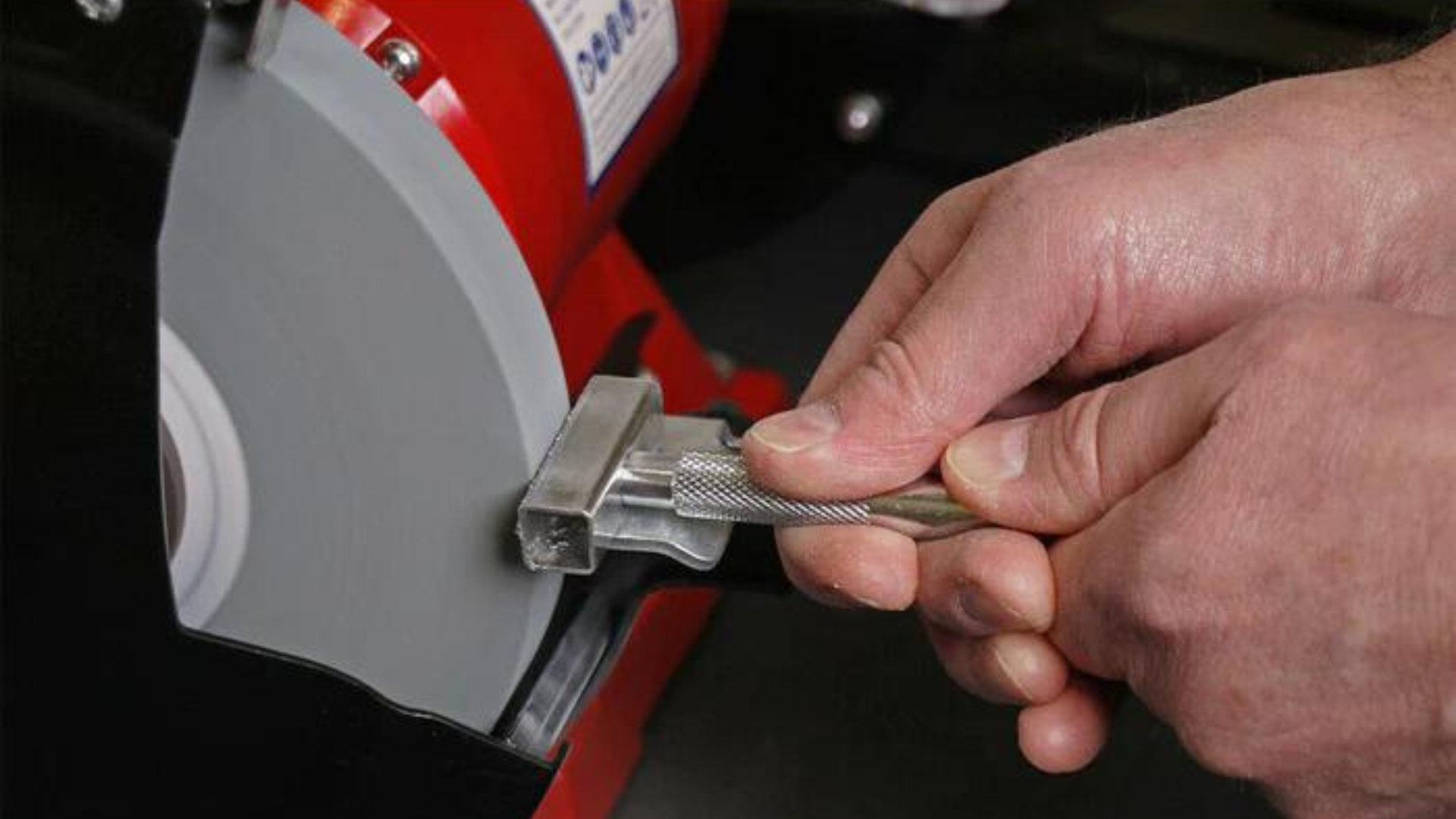
- Proper Training. It ensures that operators understand safe handling practices and maintenance procedures.
- A Thorough Inspection. A careful inspection before using the wheel includes checking for cracks or chips. Moreover, you should also check for damages. This is because these damages could lead to wheel failure during operation.
- Choose a Suitable Wheel. Consider factors like grit size, hardness, and material compatibility. These factors will help you to optimize performance and lifespan.
- Use Custom Materials for The Wheel. Using custom materials enhances the wheel's performance.
- Handle Your Grinding Wheel Properly. Proper handling includes avoiding impacts and storing it in a dry environment. Apart from this, you should also use appropriate lifting techniques to prevent damage.
- Ensure Your Wheels Are Well-Dressed. Dressing the wheel maintains its cutting ability and shape. Thus, it further promotes consistent results and extends their operational lifespan.
- Apply Constant Force While Grinding. A consistent force prevents uneven surfaces and improves surface finish. Hence, it ensures efficient material removal and reduces frequent wheel changes.
- Ensure that the Wheel is Working at the Correct Speed. Using the wheel at the right speed prevents overheating. Additionally, it also reduces the risk of wheel disintegration and maintains cutting efficiency.
Apart from these maintenance tips, you should also remember to follow manufacturer guidelines. Moreover, you should inspect it at regular intervals to maintain the grinding disc.
Safety Precautions While Using a Grinding Wheel
Using a grinding wheel requires careful attention and safety precautions. Moreover, it also helps to prevent accidents and ensure safe operations. Here are some essential safety measures you should follow while using these wheels.
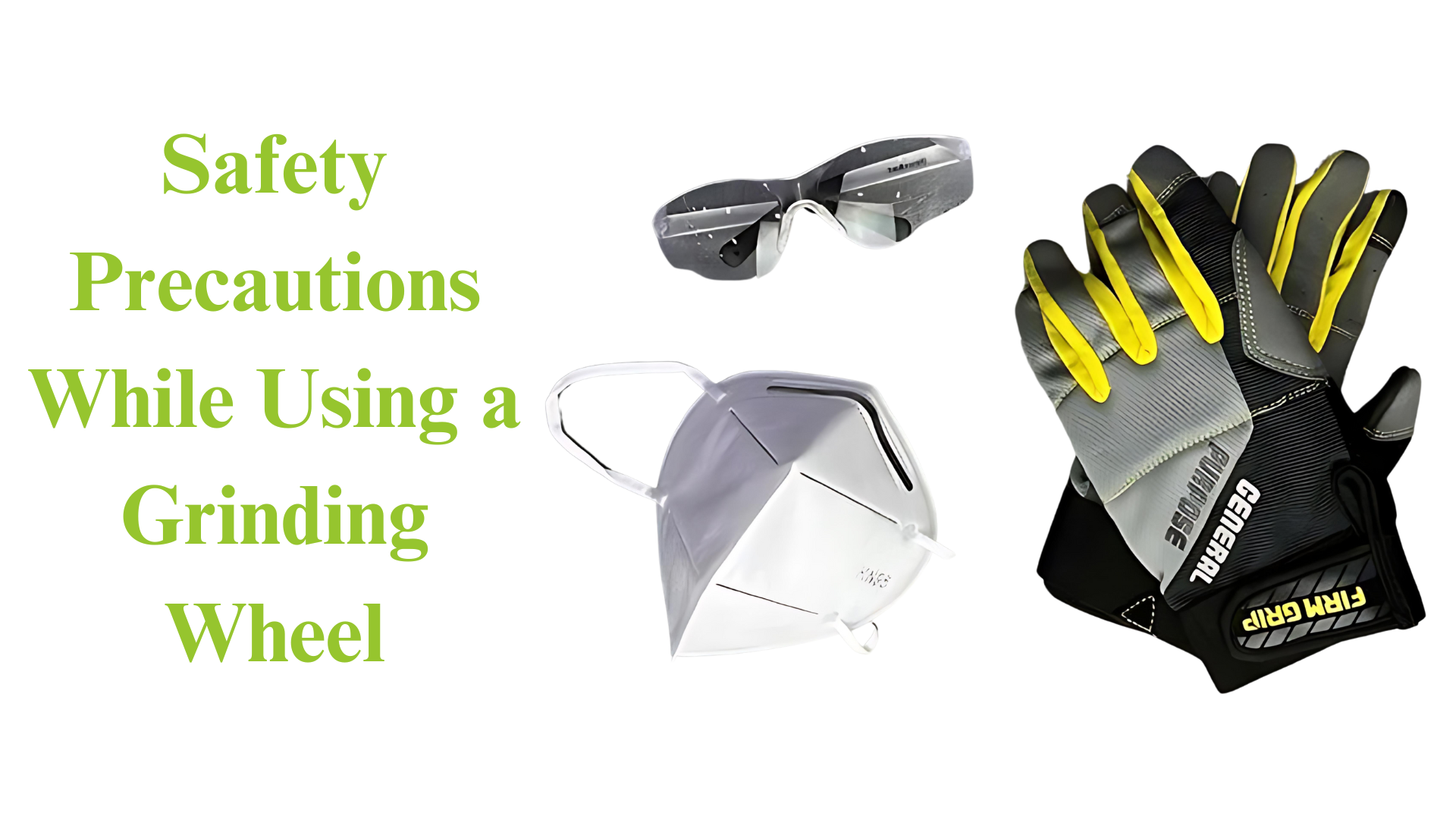
- Wear Protective Gear. You should always wear safety glasses or a face shield to protect your eyes from flying trash. Moreover, if the grinding process is loud, you should use a hearing protection headset.
- Check the Wheel. Before using a wheel, you should also check all the abrasive tools. If you notice any cracks or chips, replace the wheel right away.
- Use the Correct Wheels. You should use a suitable grinding disc for the material you want to cut. Different wheels are helpful for various tasks and materials.
- Keep a Safe Distance. When using the wheel, stand on the side of it. You should never stand in front of it because it may lead to accidents.
- Follow the Manufacturer’s Guidelines. You should also follow the manufacturer’s guidelines for all types of abrasive tools. The guidelines may include speed, mounting process, and grinding process.
It is important to focus on safety when using a grinding wheel to cut the risk of accidents and injuries. These precautions will help you create safe working surroundings. Moreover, it will help you carry out effective grinding operations.
The Bottom Line
We know that the grinding and manufacturing industries are growing to a great extent. Thus, it is important to maintain and use grinding wheels in the right way. Hence, it helps you to achieve better efficiency and safety. This blog post provides eight essential tips to make your grinding discs and other abrasive tools last longer. As a result, these tips will also help you to improve your project’s outcomes. Whether you’re a professional or a DIY fan, these tips will help you to achieve better outcomes. Yet, ensuring optimal performance and minimizing risks are essential as well.

